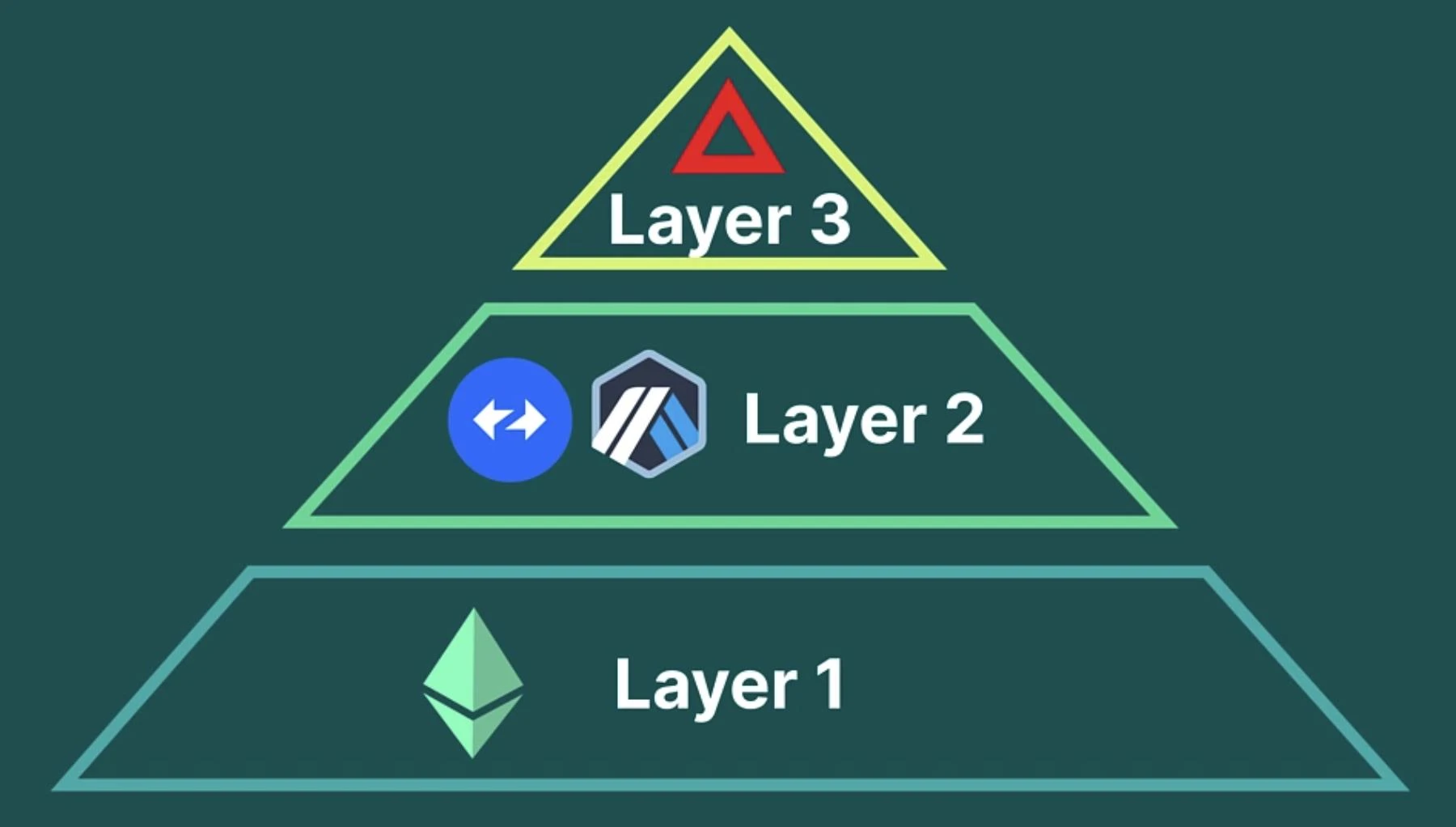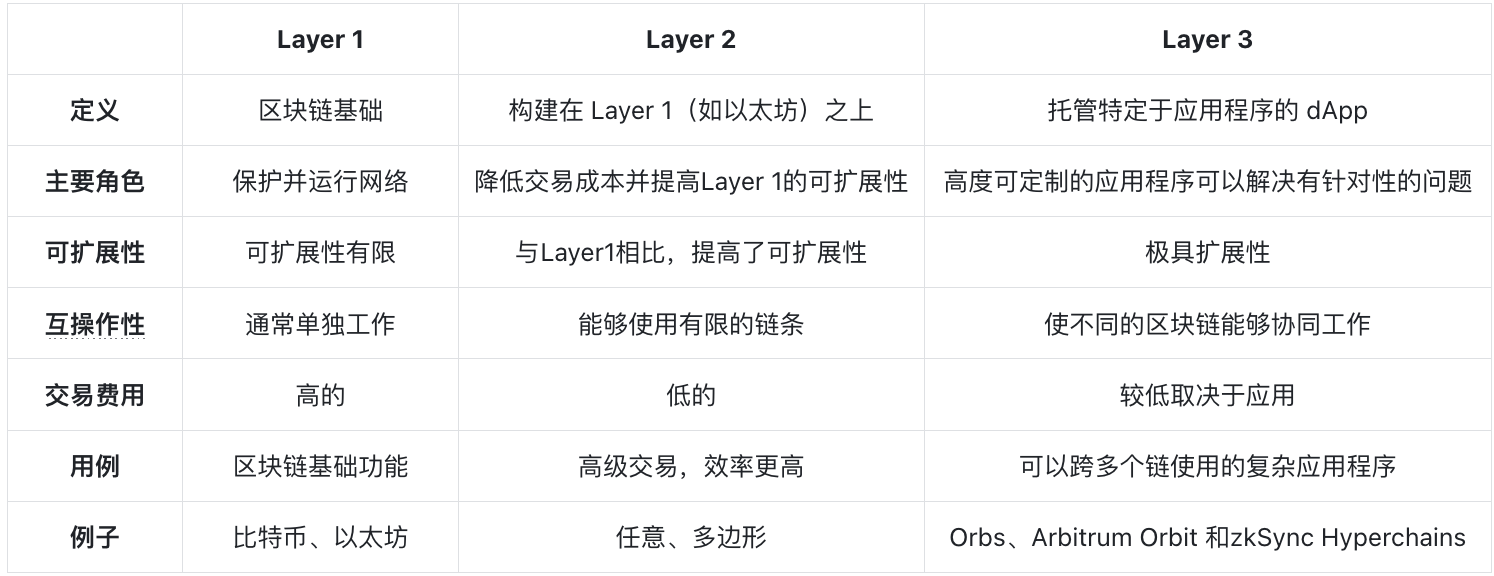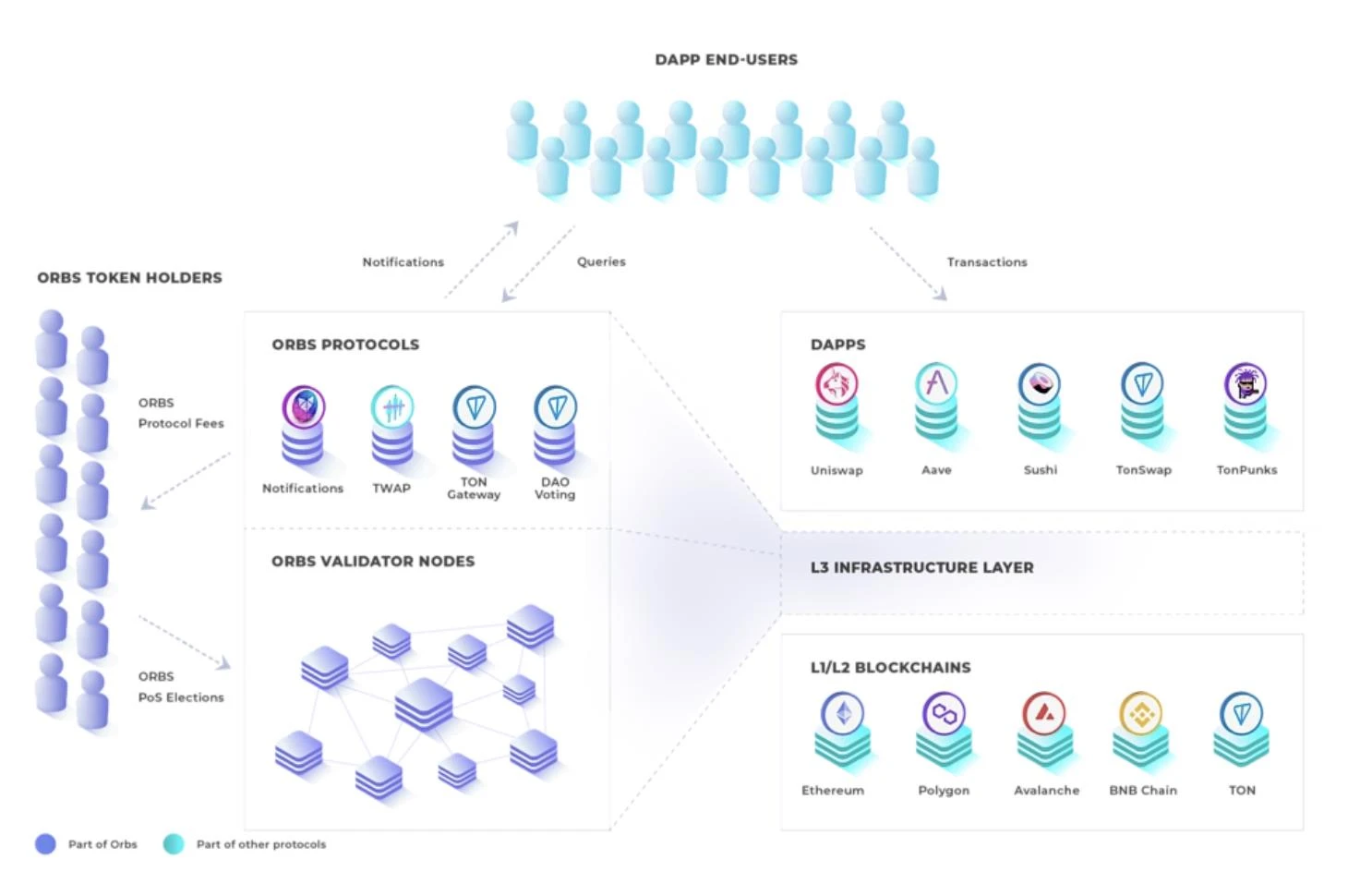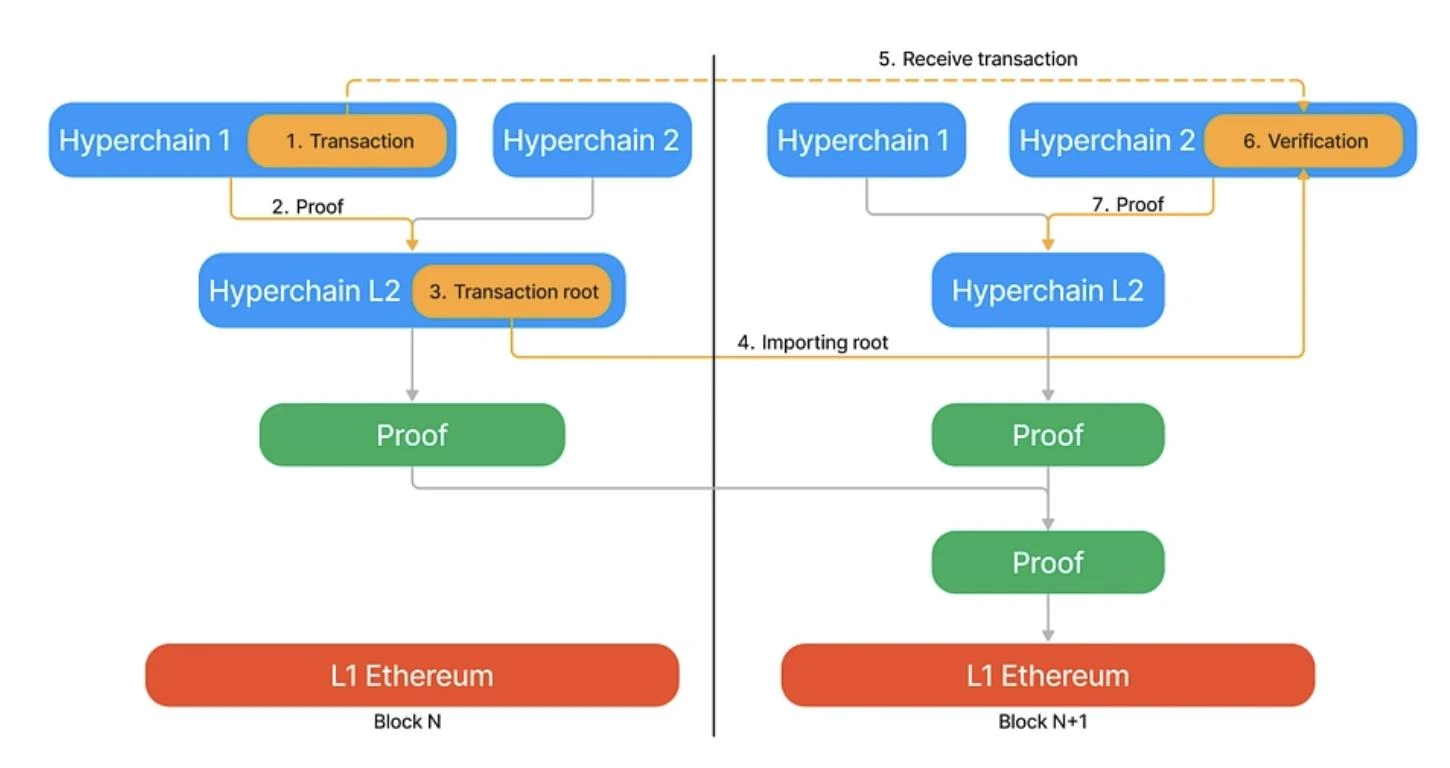Original author: Hwee Yan
Original translation: Deep Tide TechFlow
What is a Layer 3 Protocol?
A Layer 3 protocol is built on top of Layer 2 and aims to provide better scalability, allowing developers to create custom, application-specific blockchains according to their needs.
Key Points
Layer 3 protocols are built on top of Layer 2 to host decentralized applications specific to applications.
Layer 3 protocols can address various issues such as scalability, interoperability, and customization.
Examples of Layer 3 protocols: Orbs, Arbitrum Orbit, and zkSync Hyperchains.

How do L1, L2, and L3 work together?
Layer 1 forms the base blockchain where blocks are added and transactions are ultimately confirmed. However, Layer 1 faces the blockchain trilemma, as it cannot simultaneously achieve scalability, decentralization, and security. Blockchains like Bitcoin and Ethereum prioritize decentralization and security over scalability, resulting in slow transaction speeds as network users increase.
This is where Layer 2 comes in to address the scalability issue. Layer 2 is a off-chain vertical scaling solution that operates on top of Layer 1 blockchains like Ethereum to achieve scalability, providing users with faster transaction speeds and lower gas fees. They can be implemented in the form of aggregation (Rollup) or validation, as seen in the case of Polygon 2.0. Many Layer 2 solutions such as Polygon, zkSync, and Arbitrum have released solutions that enable developers to create application-specific chains built on top of Layer 2, leading us to Layer 3.
Layer 3 is an advanced protocol built on existing Layer 2 solutions, providing interoperability and application-specific functionalities. This means that Layer 3 is highly customizable, able to meet developers' specific needs, such as providing solutions for privacy-related issues or supporting a large number of transactions while still inheriting the security of Layer 1 blockchains. Currently, most Layer 3 protocols are built on Ethereum, and at the time of writing this article, some blockchains (such as Bitcoin) are not suitable for hosting Layer 3 applications.

What problems can Layer 3 solve?
Now that we understand how Layer 1, Layer 2, and Layer 3 work together, let's take a closer look at Layer 3 and how it further expands blockchain.
Scalability
Layer 3 aims to enhance scalability beyond the capabilities of current Layer 1 and Layer 2, thus possessing extremely high scalability. As a result, Layer 3 networks can handle a larger volume of transactions while supporting a wider range of complex applications.
Support for complex dApps
Layer 3 can provide the necessary infrastructure for developing more complex decentralized applications that require advanced functionalities. This may help improve web design, incorporate more advanced features into applications, and make it easier for non-technical users to use them. Depending on developers' needs, Layer 3 can also facilitate more complex smart contract designs that are beyond the scalability of Layer 1 and Layer 2.
Blockchain interoperability
Layer 3 also addresses interoperability issues. It can act as a bridge between various blockchains, allowing transactions and data to flow across different platforms. This means that Layer 3 dApps have the capability to connect to different blockchains (such as Ethereum and Solana).
Customization
Layer 3 can also be customized according to developers' unique requirements. For example, developers can introduce application-specific mechanisms that only allow for the execution of private transactions and contracts, thereby disclosing only partial data. Due to the highly customizable nature of Layer 3, developers can tailor the governance mechanisms, rules, and functionalities of dApps according to their needs.
Arbitrum Orbit allows developers to customize different aspects of their chain. For example, developers can customize and select which tokens to accept as transaction fees on their chain. This provides developers with flexibility to choose and potentially include a platform's native token, allowing them to customize the functionalities of their decentralized applications (dApps) according to their unique needs.
Additionally, developers can customize their dApps to ensure users have more consistent and reliable gas prices. Developers can also launch their own blockchain networks with specific functionalities, such as Arbitrum's Nitro-powered blockchain network and Stylus for EVM+ compatibility. Some other custom features provided by Arbitrum Orbit include privacy, permissions, fee tokens, governance, and more.
Cost-effectiveness
As Layer 3 networks handle some transactions and operations off-chain, this helps reduce network congestion, significantly lowering transaction costs. This cost efficiency helps lower the barrier to entry, making it easier for developers and users to use.
For example, Xai Network is a gaming network specifically designed to support Web3 games. The Xai Network is built on Arbitrum's Layer 3 network, introducing parallel processing to improve efficiency and scalability while further reducing costs.
Accessibility
Layer 3 can also become more user-friendly and easier to implement. For example, Arbitrum Orbit allows anyone to build and deploy their own Layer 3 network on Arbitrum Nitro without requiring approval. In contrast, launching a Layer 2 requires proposals around its trust model and how to achieve full decentralization.
Use Cases of Layer 3
Now that we understand what problems Layer 3 solves, here are some potential use cases of Layer 3:
Gaming Applications
One of the use cases of Layer 3 is blockchain gaming. Running applications on Layer 3 allows them to operate on specific blockchains, enabling transactions to be processed at faster speeds and handling a larger volume of transactions. This is particularly important for gaming applications, as it can help developers maintain a smooth in-game experience for users.
Gaming applications often involve many microtransactions, which can be costly. Therefore, running these applications on Layer 3 can ensure cost efficiency for users, as transaction fees on Layer 3 are lower.
Decentralized Finance (DeFi) Applications
Another potential use case of Layer 3 is decentralized finance applications. Running on Layer 3 is an ideal choice as it allows decentralized finance applications to be customized according to the application's needs. This means that developers will be able to customize the privacy settings and different functionalities of the application. Additionally, Layer 3 has extremely high scalability, ensuring that a large volume of transactions can be processed quickly, which is crucial for real-time transactions. Layer 3 also allows interoperability between various blockchain networks, enabling users to transfer assets across different networks.
Examples of Layer 3
While the concept of Layer 3 is still considered a relatively new development in the crypto space, here are some notable projects:
Orbs
Orbs combines with existing Layer 1 and Layer 2 protocols, serving as a Layer 3 blockchain focused on addressing the scalability issues faced by the Ethereum blockchain. According to its website, Orbs views its Layer 3 as "enhanced execution," allowing developers to develop smart contracts by running as decentralized serverless cloud.

Source: Orbs
This means that developers can write and deploy their smart contracts on Orbs' own decentralized network without having to worry about the underlying infrastructure of the network. This also provides developers with the convenience of not having to maintain physical servers. Currently, Orbs can be used in conjunction with some Layer 1 and Layer 2 protocols, including Ethereum, BNB Chain, Avalanche, Polygon, and others.
Arbitrum Orbit
In 2023, the Arbitrum Foundation also released a new feature - Arbitrum Orbit, envisioned as a Layer 3 blockchain built on the Arbitrum Nitro platform. In addition to lower transaction costs and enhanced scalability, developers can create their own self-managed dedicated blockchains on the Arbitrum Nitro platform, allowing them to use customized blockchains according to their specific needs.
zkSync Hyperchains
The zkSync Hyperchains introduced by the zkSync team can serve as Layer 3, using Layer 2 for settlement. zkSync Hyperchains are powered by the same zkEVM engine available on the ZK Stack, where all ZKP circuits remain consistent, and inherit the security of Layer 1 regardless of who deploys them. One benefit is that Layer 3 settlements on the same Layer 2 will have faster message passing speeds and achieve interoperability within a broader ecosystem.

Source: zkSync Era
Final Thoughts
The development of Layer 3 is an interesting innovation in the crypto space. By combining the best parts of Layer 1 and Layer 2, it improves upon our previous functionalities, such as making the network more scalable while also more secure. Nevertheless, it is important to remember that each layer plays a crucial role in the blockchain ecosystem and they are not in competition with each other. Currently, Layer 3 is still in the development stage, but it is clear that Layer 3 will play a key role in shaping how we utilize blockchain technology in the future, making it easier for blockchain to handle high transaction volumes.
免责声明:本文章仅代表作者个人观点,不代表本平台的立场和观点。本文章仅供信息分享,不构成对任何人的任何投资建议。用户与作者之间的任何争议,与本平台无关。如网页中刊载的文章或图片涉及侵权,请提供相关的权利证明和身份证明发送邮件到support@aicoin.com,本平台相关工作人员将会进行核查。




